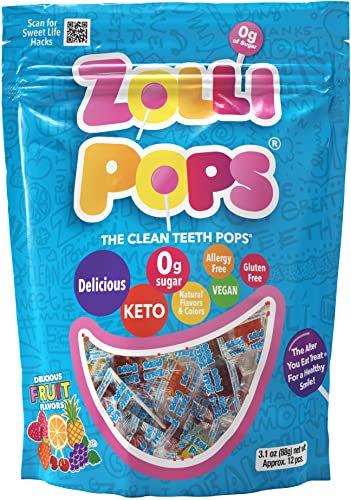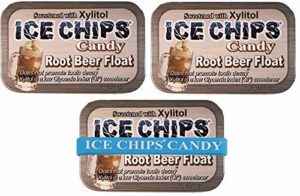In our step-by-step guide, we will explore ways to encourage children to eat healthy snacks for their teeth. We understand the importance of maintaining good oral health from an early age, and this guide aims to provide practical tips and strategies for parents and caregivers to promote nutritious snacking habits. By equipping ourselves with these techniques, we can help our children develop a positive relationship with healthy snacks, ensuring their dental well-being in the long run.
Delicious treats that promote dental health
Create a Positive Food Environment
To set up a positive food environment, keep healthy snacks readily available and visible. Place a bowl of fresh fruits or a tray of cut vegetables on the kitchen counter or dining table. Stock your pantry and refrigerator with nutritious options like yogurt, hummus, and nuts. By making these healthy choices easily accessible, you’ll be more likely to reach for them when hunger strikes, creating a positive food environment for yourself and others.
Offer a Variety of Options
To provide a wide range of healthy snack options, consider the following:
- Stock up on a variety of fruits, such as apples, oranges, grapes, and berries, to cater to those who prefer fresh produce.
- Include a selection of nuts and seeds, like almonds, walnuts, pumpkin seeds, and sunflower seeds, for those who enjoy crunchy and protein-rich snacks.
- Offer a range of yogurt flavors, such as vanilla, strawberry, and blueberry, to satisfy different taste preferences.
- Don’t forget to provide vegetable-based snacks, like carrot sticks, cucumber slices, and cherry tomatoes, for those who prefer savory options.
Make Snacks Fun and Appealing
To present snacks in a fun and visually appealing way, follow these steps:
- Use colorful and eye-catching serving dishes or plates to make the snacks visually appealing.
- Arrange the snacks in a creative and playful manner, such as making a fruit skewer or arranging vegetables in the shape of a smiley face.
- Add a touch of fun by using food picks or toothpicks with cute designs to make the snacks more enticing.
- Get creative with presentation by using cookie cutters to shape fruits or sandwiches into fun shapes, like stars or animals.
By presenting snacks in such an appealing way, children are more likely to be enticed to try them, leading to a healthier and more enjoyable snacking experience.
Involve Children in Meal Planning and Preparation
Engage children in selecting and preparing healthy snacks by involving them in the decision-making process. Encourage them to choose fruits, vegetables, or other nutritious options from a selection you provide. Then, guide them in washing, cutting, or assembling the snack to make them feel involved and invested in the final product. This hands-on experience will not only teach them about healthy food choices but also enhance their sense of accomplishment and ownership in their snack preparation.
Educate About the Benefits of Healthy Snacks
Teach children about the positive impact of healthy snacks on their teeth and overall health. Start by explaining how eating fruits and vegetables can help strengthen their teeth and prevent cavities. Show them examples of nutritious snacks like carrot sticks, apple slices, and yogurt, and explain how these foods provide essential vitamins and minerals for their bodies. Encourage them to choose these snacks over sugary and processed options, emphasizing the long-term benefits for their oral and overall health.
Lead by Example
To demonstrate healthy eating habits by consuming nutritious snacks yourself, start by choosing snacks that are rich in nutrients and low in unhealthy additives. Incorporate fruits, vegetables, whole grains, and lean proteins into your snack choices. Avoid sugary or processed snacks and opt for options like fresh fruit, raw veggies with hummus, yogurt, or nuts. By making these choices, you can lead by example and show others the importance of nourishing their bodies with wholesome snacks.
Create Positive Associations
Associate healthy snacks with positive experiences by offering them as rewards or treats after engaging in physical activities or completing tasks. Make sure to emphasize the enjoyment and satisfaction of eating these snacks, highlighting their delicious taste and the energy they provide. Additionally, involve children in the preparation process to create a sense of ownership and excitement around choosing and making their own healthy snacks.
Limit Access to Unhealthy Snacks
Minimize the availability of sugary or unhealthy snacks by removing them from your immediate environment. Clear out any cabinets or drawers that typically store these snacks and replace them with healthier options such as fruits or nuts. Keep a bowl of fresh fruits on your kitchen counter as a visible reminder to make healthier choices. By reducing the accessibility of unhealthy snacks, you can better resist temptations and maintain a nutritious diet.
Reward and Reinforce Healthy Snack Choices
Recognize and reward children for making healthy snack choices by providing positive reinforcement. Encourage them by praising their decision to choose nutritious snacks over unhealthy options. Consider implementing a reward system such as stickers, small prizes, or verbal praise to reinforce their positive behavior and motivate them to continue making healthy choices.
Encourage Regular Dental Check-ups
To stress the importance of dental health and maintain healthy teeth, it is crucial to schedule regular dental check-ups. Follow these steps to ensure you are taking care of your oral hygiene:
- Find a reliable dentist: Research and choose a dentist who is experienced and empathetic towards your dental needs.
- Schedule regular check-ups: Aim to visit the dentist every six months or as recommended by your dentist. Regular check-ups help detect any dental issues early on and prevent them from worsening.
- Communicate your concerns: During your check-up, discuss any dental problems or concerns you may have with your dentist. They can provide you with appropriate advice and treatment options.
- Follow a consistent oral hygiene routine: Brush your teeth twice a day using fluoride toothpaste, floss daily, and rinse with mouthwash. This routine will help prevent dental decay and maintain healthy teeth and gums.
- Consider preventive treatments: Your dentist may recommend additional preventive treatments such as dental sealants or fluoride treatments. These can protect your teeth from cavities and strengthen your enamel.
- Be aware of oral health habits: Avoid smoking, excessive alcohol consumption, and chewing tobacco, as these habits can lead to oral health problems.
By following these steps and scheduling regular dental check-ups, you can maintain optimal oral health and prevent dental issues in the long run. Your smile is worth it!
Promoting lifelong dental health
In conclusion, we have explored various strategies to encourage children to eat healthy snacks for their teeth. We have emphasized the importance of setting a good example as parents, providing a variety of nutritious options, and making snack time fun and engaging. By implementing these tips, we can help our children develop healthy eating habits that will benefit their dental health in the long run. Let’s work together to make snack time a time of nourishment and oral care for our little ones.
Easy and Fun Ideas
Tips for Incorporating Healthy Snacks into Your Dental Care Routine
- Choose snacks that are low in sugar: Opt for snacks that are low in added sugars, as excessive sugar consumption can contribute to tooth decay
- Include crunchy fruits and vegetables: Snacks like apples, carrots, and celery have a high water content and require more chewing, which stimulates saliva production and helps wash away food particles from teeth
- Incorporate dairy products: Dairy products like cheese, yogurt, and milk are rich in calcium, which is essential for strong teeth and bones
- Avoid sticky snacks: Sticky snacks like dried fruits and candies can cling to the teeth for longer periods, increasing the risk of cavities
- Rinse with water after snacking: After enjoying any snack, especially those high in sugar or acidity, rinse your mouth with water to help remove any lingering food particles and acids
Frequently Asked Questions about Nourishing Snacks for Teeth
Can you suggest some snack ideas that are low in sugar and still tasty?
Certainly! When it comes to low-sugar snacks, there are plenty of delicious options to choose from. Here are some suggestions that we think you’ll enjoy:
- Fresh fruit: Nature’s candy! Fruits like berries, apples, oranges, and grapes are not only low in sugar but also packed with vitamins and fiber.
- Greek yogurt: Opt for plain or unsweetened varieties and add your own flavorings like nuts, seeds, or a drizzle of honey for a touch of sweetness.
- Vegetable sticks with hummus: Crunchy and nutritious, vegetables like carrot sticks, cucumber slices, and bell pepper strips paired with a tasty hummus dip make for a satisfying and low-sugar snack.
- Nuts and seeds: Almonds, walnuts, pumpkin seeds, and sunflower seeds are great options. They provide healthy fats, protein, and a satisfying crunch.
- Cheese and whole grain crackers: Look for whole grain crackers with minimal added sugars and pair them with a small portion of cheese for a tasty and satisfying snack.
- Hard-boiled eggs: Protein-packed and filling, hard-boiled eggs are a convenient and low-sugar snack option.
- Popcorn: Air-popped popcorn without added sugar or excessive butter can be a great low-sugar snack. It’s high in fiber and can be seasoned with herbs, spices, or a sprinkle of nutritional yeast for flavor.
How can we incorporate fruits and vegetables into our snacking routine for better dental health?
To incorporate fruits and vegetables into our snacking routine for better dental health, we can follow a few simple steps. Firstly, we can choose crunchy fruits and veggies like apples, carrots, and celery that require more chewing. The act of chewing stimulates saliva production, which helps neutralize acids and wash away food particles that can contribute to tooth decay.
Secondly, we can cut fruits and vegetables into bite-sized pieces and keep them readily available. Having them pre-cut and easily accessible makes it convenient to grab them as a snack option instead of reaching for less healthy alternatives.
Additionally, we can try incorporating fruits and vegetables into our meals and snacks in creative ways. For example, we can add sliced fruits like berries or bananas to yogurt or incorporate veggies like spinach or bell peppers into sandwiches or wraps.
Furthermore, it’s important to be mindful of our overall snacking habits. Instead of opting for sugary snacks or processed foods, we can choose fruits and vegetables as healthier alternatives. This not only benefits our dental health but also provides essential vitamins and minerals for our overall well-being.
Lastly, we should remember to practice good oral hygiene habits such as brushing our teeth at least twice a day, flossing regularly, and visiting the dentist for routine check-ups. These habits, along with incorporating fruits and vegetables into our snacking routine, can contribute to better dental health.
In conclusion, by choosing crunchy fruits and vegetables, keeping them readily available, getting creative with incorporating them into our meals and snacks, and being mindful of our overall snacking habits, we can effectively incorporate fruits and vegetables into our snacking routine for better dental health.















